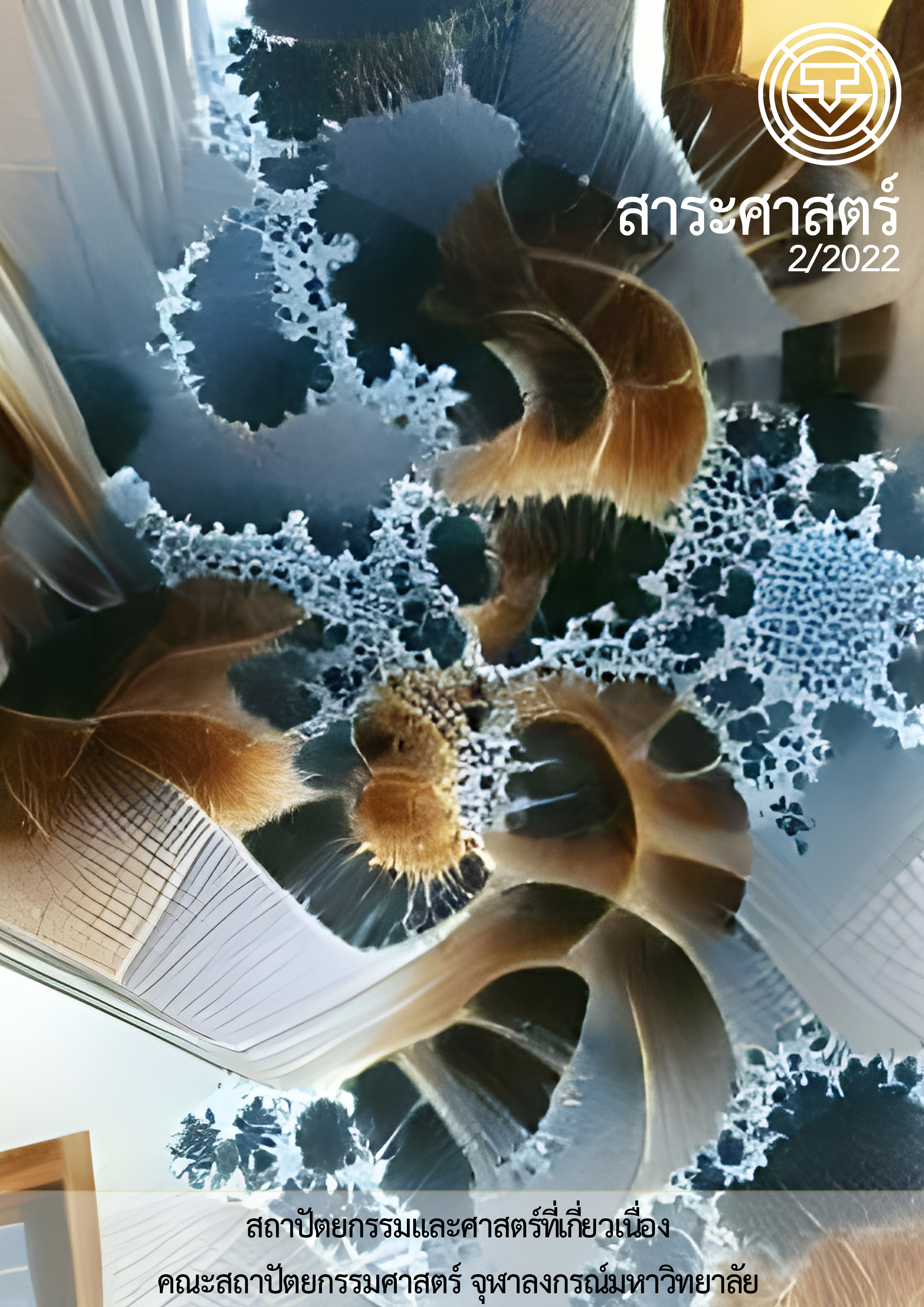Cultural Landscape Components of Ancient Chaiya, Surat Thani
Main Article Content
Abstract
The ancient city of Chaiya, located on the peninsula of southern Thailand, is a significant Srivijaya community site, dating from the 13th to 18th centuries BE and continuing into the Ayutthaya period. To preserve the aspects of old Chaiya, it is necessary to understand Chaiya from a holistic perspective. Thus, the purpose of this research is to determine the elements of the Chaiya cultural landscape, together with human-nature interactions, socio-cultural settlement, and development. This investigation followed a landscape archaeological process and applied sources of evidence that represented a historic landscape. The study relied on historical and archaeological data, along with aerial photos and site observations.
The results revealed that traces of Chaiya's historic landscape could be found in natural resources such as dunes, plains, and canals, as well as in cultural heritage sites such as community areas and religious places. Consequently, three areas of the Chaiya cultural landscape have been identified: (1) human habitation remains on the dunes; (2) agricultural areas on flood plains with canals; and (3) religious sites, either living or dead monuments. While historic pedestrian and water transport paths have been lost or changed.
This research provides essential information for ancient Chaiya's future conservation strategy. It also demonstrates a methodology that can be applied to other cultural landscape sites.
Article Details
References
กรมศิลปากร. (2525). โครงการขุดแต่งและบูรณะวัดหลง อำเภอไชยา จังหวัดสุราษฎร์ธานี. กรุงเทพฯ: หน่วยศิลปากรที่ 14 กองโบราณคดี.
กรมศิลปากร. (2526). รายงานการขุดค้นทางโบราณคดีบริเวณแหลมโพธิ์ตำบลพุมเรียง อำเภอไชยา จังหวัดสุราษฏร์ธานี.กรุงเทพฯ: โครงการโบราณคดีประเทศไทย ภาคใต้ กองโบราณคดี.
กรมศิลปากร. (2539). รายงานการสํารวจปากถ้ำภูเขาน้ำร้อน ตําบลเลม็ด อําเภอไชยา จังหวัดสุราษฏร์ธานี. นครศรีธรรมราช: สํานักโบราณคดีและพิพิธภัณฑสถานแห่งชาติที่ 11 นครศรีธรรมราช, เอกสารอัดสําเนา.
เขมชาติ เทพไชย. (2531). แหลมโพธิ แหล่งเศรษฐกิจของศรีวิชัย. กรุงเทพมหานคร: กรมศิลปากร.
ชิน อยู่ดี. (2531). “ข้าว: จากหลักฐานโบราณคดีในไทย” ข้าวไพร่-ข้าวเจ้า ของชาวสยาม. กรุงเทพมหานคร: ศิลปวัฒนธรรม.
ดรุณี แก้วม่วง และ สถาพร ศรีสัจจัง. (2542). ภาคใต้-ชุมชนโบราณรอบอ่าวบ้านดอน. ใน สารานุกรมวัฒนธรรมไทย ภาคใต้ เล่ม 12 (หน้า 1568). สงขลา: สถาบันคดีศึกษามหาวิทยาลัยศรีนครินทร์วิโรฒ สงขลา.
ทิวา ศุภจรรยา. (2525). ความสัมพันธ์ทางภูมิศาสตร์และที่ตั้งชุมชนโบราณในจังหวัดภาคใต้: รายงานการสัมมนาประวัติศาสตร์โบราณคดีศรีวิชัย. กรุงเทพฯ:โรงพิมพ์พิฆเนศ.
ธราพงศ์ ศรีสุชาติ. (2542). ไชยา: ชุมชนโบราณ. ใน สารานุกรมวัฒนธรรมไทย ภาคใต้ เล่ม 5 (หน้า 2215). สงขลา: สถาบันคดีศึกษามหาวิทยาลัยศรีนครินทร วิโรฒ สงขลา.
นุชนภางค์ ชุมดี. (2540). การตั้งถิ่นฐานของชุมชนโบราณบนสันทรายด้านชายฝั่งทะเลตะวันออกของภาคใต้ของไทย. (วิทยานิพนธ์ปริญญาบัณฑิต, มหาวิทยาลัยศิลปากร).
ปัทมาพร ทองเฝือ. (2551). บทบาทของเมืองท่าบนคาบสมุทรภาคใต้ของไทยในช่วงก่อนพุทธศตวรรษที่ 19 กรณีศึกษาแหล่งโบราณคดีรอบอ่าวบ้านดอน จังหวัดสุราษฎร์ธานี. (วิทยานิพนธ์ปริญญาบัณฑิต, มหาวิทยาลัยศิลปากร).
พุทธทาสภิกขุ. (2529). แนวสังเขปของโบราณคดีรอบอ่าวบ้านดอน (พิมพ์ครั้งที่ 2). กรุงเทพฯ: ธรรมทานมูลนิธิ.
เพลงเมธา ขาวหนูนา. (2557). พัฒนาการทางวัฒนธรรมของชุมชนโบราณในอำเภอไชยา จังหวัดสุราษฎร์ธานี. (วิทยานิพนธ์ปริญญามหาบัณฑิต, มหาวิทยาลัยศิลปากร).
ลักษมณ์ บุญเรือง. (2561). หลักฐานเกี่ยวกับวัฒนธรรมศรีวิชัยในคาบสมุทรภาคใต้. วารสารข่วงผญา, 13(1), 131-163.
ศรีศักดิ์ วัลลิโภดม. (2525). พัฒนาการของบ้านเมืองในภาคใต้ของประเทศไทยในสมัยศรีวิชัย. ใน รายงานการสัมมนาประวัติศาสตร์โบราณคดีศรีวิชัย. กรุงเทพฯ:โรงพิมพ์พิฆเนศ.
ศรีศักร วัลลิโภดม. (2564). บทความชุดคาบสมุทรแห่งสยามประเทศ: ศรีวิชัยที่ไชยา. สืบค้นเมื่อ 1 ธันวาคม 2564, จากสยามเทศะ https://siamdesa.org/pagecontent.php?articles=3&type=5&page=4
สํานักงานเกษตรและสหกรณ์จังหวัดสุราษฎร์ธานี. (2554). ข้าวหอมไชยา กลุ่มสารสนเทศการเกษตร. [ม.ป.ท.].Claeys, Jean Yves. (1931). L’Archéologie du Siam. Hanoi: Imprimerie d'Extrême-Orient.
Mitchell, Nora, Rössler, Mechtild, & Tricaud, Pierre Marie. (2009). World heritage cultural landscapes: A handbook for conservation and management. Retrieved from UNESCO Digital Library (UNESDOC) website: https://unesdoc.unesco.org/ark:/48223/pf0000187044

